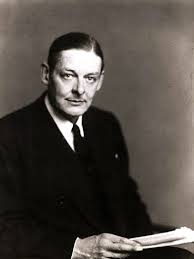
The actors appeared off-handedly on stage and arranged themselves not more than a few feet in front of this groundling who was standing about 4 deep in front of the stage. They crooned to the audience, very softly at first - not competing with the ambient conversation level. It became quiet and the performance was underway (not before a Renaissance tune and lyrics about turning off your cell phone and not taking pictures though).
It was special being at the Globe. The sky was still quite light and the breeze sharp because we were outdoors. I had on a heavy jacket and was glad I had brought it. The stage was naturally lit until well into the performance. There are so many components to "a review." Is the play the focus? Or the whole experience? The play may not be performed ideally, yet the experience can be very positive. The experience itself is larger. The night air, the expectation of the audience, the emphasis on music by the player-actors.

But what of the play itself? I had asked
Laurie Maguire, the "Setting the Stage" lecturer and author on Shakespeare, whether there was not "enough tradgedy" in tonight's play. This had been the common theme of the reviews I had read. Her answer was that the play was performed as both a comedy and a tragedy. (An audience member chimed in that you would "two for one") Look for comedy -- bawdiness (it was indeed), slapstick, over-acting. Enjoy the comic aspects of young love. The performance wasn't "tragic enough" only if the expectation was that it would be a pure tragedy, which it was not.
Thus primed, I watched Romeo dart and float about the stage.
Adetomiwa Edun (who reminded me a a slightly younger Barack Obama) was effortless in his movement. But for me, the effortlessness/weightlessness made Romeo less substantial -- more of a wraith than a real figure. He was wonderful at what he was doing, but was that what Romeo would be doing?
Juliet, played by
Ellie Kendrick, was very young, though not the "thirteen" that the nurse attested to. I found her performance more credible than Edun's, though she was less enchanting than either Claire Danes in the
Luhrmann film or than Olivia Hussey in Franco
Zeffirellii's 1968 film production. (I remember reading the review of this latter film in Time magazine.)
Lawrie Maguire described her a "gritty" -- and that she was. She had no fear of Friar Lawrence's potion that would have her waking up in a tomb. Her challenging her parents was equally impressive. (I didn't remember the senior Capulet to be so pompous and peremptory with her.) She contributed to the bawdiness as well emphasizing "part" in "...in other part of a man." Even Claire Danes left this emphasis alone. Kendrick's Juliet was a young, gritty, stubborn, sexy girl. But just at the edge of adolescence, an Oksana Baiul rather than Nancy Kerrigan in the 1994 Olympics.
Maguire commented that Aristotle's concept of "
tragic flaw" did not necessarily mean "character flaw" as is most commonly understood. Rather, it could include bad luck, of which there are very many examples in this play. Friar Lawrence's letter couldn't be delivered to Romeo because Friar John was quarantined en route because of fears about the plague. The question is whether having been led to identify with the characters, the audience member is drawn through a purgation of his emotions, a real catharsis. [To be Continued...]








































